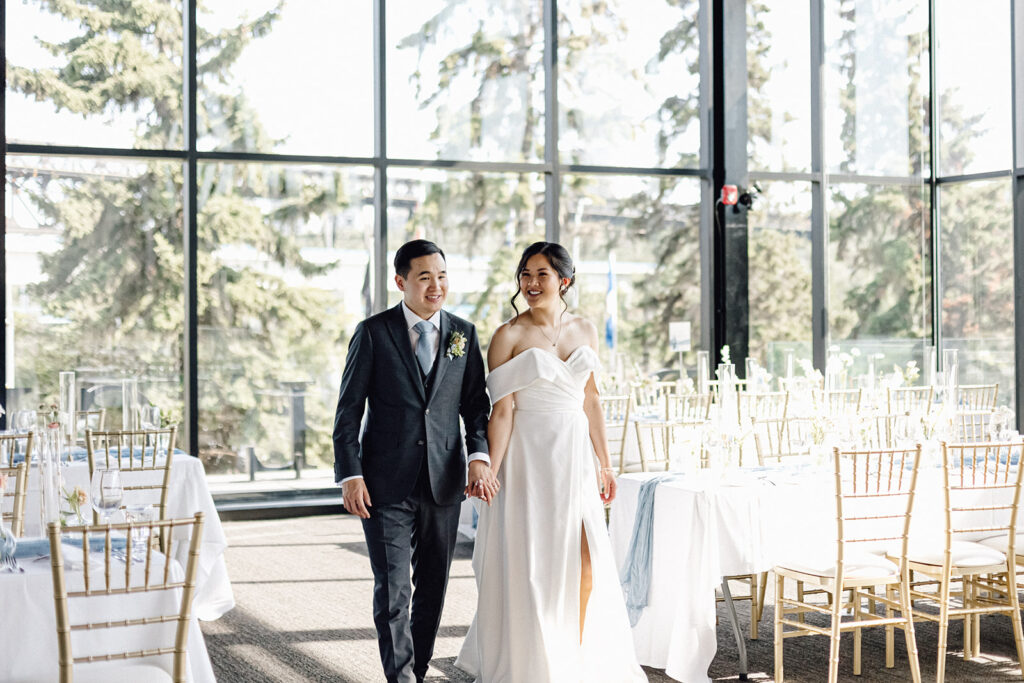You want to fill your guest list with the people who will be an active part of your future. Let’s save the networking vibe for your next high school reunion.
Here are some suggestions for quick cuts to your guest list that can go a long way:
Tit-for-Tat Invites
“I was at their wedding” (or even, “I was IN their wedding”) cannot be the only reason you invite someone to yours. It’s okay if you’ve drifted or if you’re in a different place in your life now.
If the only reason you have someone on your guest list is because of a crushing feeling of “have to,” you have the freedom to remove them.
Obligatory Invites
In a similar vein, people you “have to” invite fall under the “obligatory” invite list. Is there some rule in the family that if you invite one person from a subgroup (for example, second cousins), you must then invite EVERYONE in that group, whether or not you have a relationship with them?
I invite you to challenge that belief. The post-COVID world is a whole new one. I’d like to believe that people are more understanding and flexible when it comes to large (and expensive) gatherings.
Invite the people with whom you have a relationship. The rest will understand.
This is another “pro” of a destination wedding. A tighter invite list is expected. After all, your obligatory invites go both ways: they may feel the obligation to go. For a convenient, local affair, this isn’t a big deal for them, but with a destination wedding, they may be relieved not to have to spend what it takes to travel internationally to see you wed.
“They won’t come anyway so I’ll just invite them” Invites
You may not be gauging these numbers correctly.
Now that the world is settling into a new normal, people are itching to go places, and there’s an added importance on family gatherings. The people who you may think “oh, they hate flying they’ll never come to my destination wedding” may see an opportunity to plan that trip they’ve been procrastinating. The obligatory distant relative invite may feel the pressure to attend a family event.
Inviting on the assumption that someone won’t come is a recipe for losing control over your guest count.
Universal Plus Ones
You are not obligated to give every guest a plus one. There, I said it.
On the flip side, you’re not obligated to only invite plus ones of those who are married or engaged. These rules are obsolete.
The theme remains the same: you deserve full control over your guest list and wedding attendance.
This is your wedding. You’re not required to give everyone a plus one, and you’re not required to give an explanation, either. Just make sure your invitations explicit state who is invited to your event (full names for each family member on the envelopes – don’t leave “The Williams Family” up to interpretation!) and include a “Do I get a plus one?” as an FAQ on your wedding website.
You get to decide who you invite. And, in certain instances, you may choose to offer select plus ones. For example, if you have a friend who knows no one but you at your wedding, and think it would drastically improve their experience to bring a friend along, you can make that call. Extending a select plus one does not mean you must now include an additional, say, 20 strangers for the other single friend groups at your party, but it does mean you should give that friend a heads up that this is an exception, not a rule.
Iffy Invites
If it’s not a hell yes, it’s a hell no.
MIA Friends
One easy trick is to trim anyone on your list with whom you haven’t talked in ___ amount of time. A year, six months, it’s up to you. This is a good way to gut check whether or not someone is a tit-for-tat or obligatory invite or not.
“First Name Only” Invites
Similarly, if you can’t remember the last name or the name of a spouse on your first draft guest list, is this someone with whom you have a current, close relationship? Or are they a friend from a formative past experience (like high school or college) with whom you’ve lost touch? A distant friend of your fiancé’s you’ve never met? What’s the motive here? If they fall into the iffy or tit-for-tat category, they’re out.
“Tier 3” Guests
It can be helpful to break your guest list into three categories: Tier 1: Immediate family and ride-or-die friends, Tier 2: would love to include, and Tier 3: nice to haves/obligatory invites. Go ahead and pause on sending any save the dates to the third category. You can always add select people back in if your budget allows, but envisioning your guest list without at first is a good place to start.
Trimming your guest list (before you send the save the dates!) can have one of the most meaningful positive impacts on your wedding budget.


